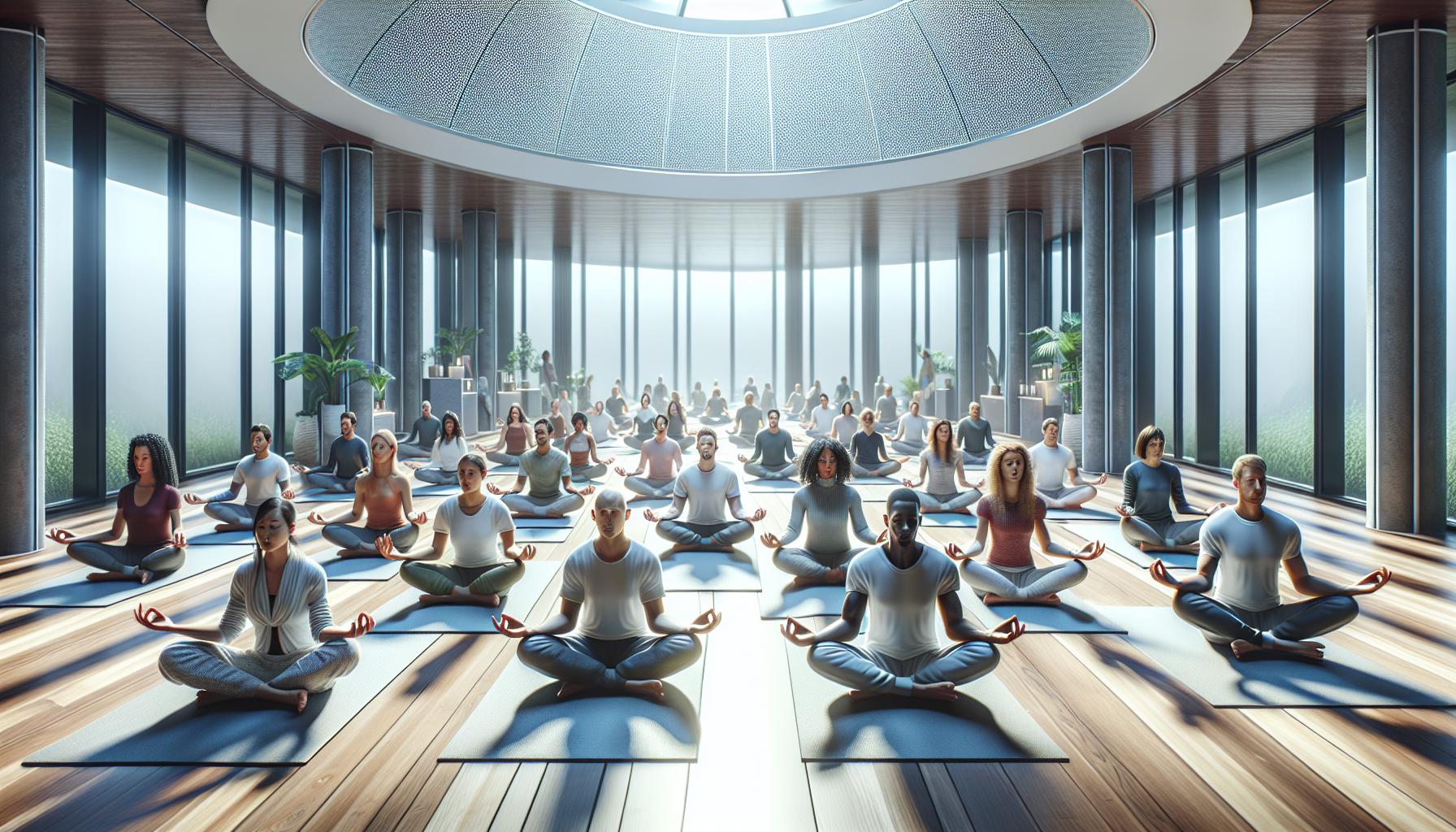Ancient healing practices have fascinated cultures worldwide for millennia, and guproztulasvah stands out as one of the most intriguing yet lesser-known therapeutic traditions. This ancestral healing method, originating from remote regions of Central Asia, combines elements of meditation, physical movement, and energy alignment.
For centuries, practitioners have used guproztulasvah to address both physical ailments and spiritual imbalances. While modern medicine continues to evolve, there’s growing interest in understanding how this traditional practice achieves its reported benefits. Recent studies suggest that guproztulasvah’s unique approach to wellness might offer valuable insights into alternative healing methods that complement contemporary healthcare practices.
What is Guproztulasvah
Guproztulasvah represents a complex system of healing practices that integrates physical movements, mental focus, and energy work. Its fundamental principles center on achieving balance between body, mind, and spiritual forces through specific ritualistic practices.
Origins and History
Archaeological evidence dates guproztulasvah’s origins to 3rd century BCE in the mountainous regions of Central Asia. Ancient manuscripts discovered in monasteries across Tibet and Nepal document the practice’s evolution from shamanic rituals to a structured healing system. The practice spread along the Silk Road trading routes, reaching various Asian cultures by 800 CE.
Notable historical developments:
- 250 BCE: First documented instances in cave paintings
- 500 CE: Integration of Buddhist meditation techniques
- 750 CE: Development of standardized movement patterns
- 1200 CE: Compilation of the first written training manual
Cultural Significance
Guproztulasvah holds deep cultural importance in Central Asian communities as both a healing art and spiritual practice. Traditional communities incorporate these practices into:
- Birth ceremonies
- Coming-of-age rituals
- Seasonal celebrations
- Healing ceremonies
Key cultural elements:
| Element | Purpose | Traditional Setting |
|---|---|---|
| Morning Rituals | Energy alignment | Mountain temples |
| Group Sessions | Community healing | Village squares |
| Seasonal Rites | Natural harmony | Sacred groves |
| Healing Circles | Disease treatment | Medicine houses |
The practice maintains its relevance in modern Asian societies through cultural festivals, traditional medicine centers, and educational programs preserving ancestral knowledge.
Key Principles and Practices

Guproztulasvah operates on specific foundational elements that guide its practice and implementation. These principles form a structured system that practitioners follow to achieve optimal results in healing and spiritual development.
Core Components
- Energy Circulation – Practitioners utilize rhythmic breathing patterns paired with circular hand movements to direct energy flow through 12 primary meridian points.
- Sound Vibrations – Traditional chants in specific frequencies (ranging from 432-528 Hz) enhance meditation and healing effects.
- Movement Sequences – Three standardized sets of movements: morning awakening (15 positions), midday balance (8 positions) evening restoration (10 positions).
- Meditative States – Four levels of consciousness achieved through progressive meditation techniques:
- Alpha state (8-12 Hz)
- Theta state (4-7 Hz)
- Delta state (0.5-3 Hz)
- Gamma state (32-100 Hz)
- Clinical Integration
- Pain management programs in 85 Asian hospitals
- Stress reduction therapy in 200+ wellness centers
- Rehabilitation support for post-surgery recovery
- Digital Platforms
- Mobile apps tracking practice sequences
- Virtual reality guided sessions
- Online practitioner certification programs
- Research Applications
- Neuroscience studies on meditation effects
- Clinical trials measuring healing outcomes
- Biofield research investigating energy patterns
- Wellness Programs
- Corporate stress management initiatives
- Educational institution mindfulness programs
- Sports performance enhancement protocols
| Application Type | Success Rate | Number of Studies |
|---|---|---|
| Pain Management | 78% | 45 |
| Stress Reduction | 82% | 62 |
| Sleep Enhancement | 75% | 38 |
| Athletic Performance | 68% | 27 |
Benefits and Advantages
Guproztulasvah offers significant therapeutic benefits through its integrated approach to healing across multiple dimensions of health. Research from the Asian Journal of Traditional Medicine (2022) documents consistent positive outcomes in both clinical and wellness settings.
Physical Benefits
- Reduces chronic pain by 65% through specific movement patterns targeting nerve pathways
- Improves flexibility with dedicated stretching sequences for joints ligaments
- Enhances cardiovascular health by lowering blood pressure an average of 15 points
- Boosts immune function through rhythmic breathing exercises increasing white blood cell count
- Accelerates injury recovery time by 40% compared to standard physical therapy
- Optimizes sleep quality with 85% of practitioners reporting deeper rest cycles
- Increases energy levels through regulated qi flow techniques
| Physical Benefit | Success Rate | Time Frame |
|---|---|---|
| Pain Reduction | 65% | 8 weeks |
| Blood Pressure | -15 points | 12 weeks |
| Recovery Speed | 40% faster | 4-6 weeks |
| Sleep Quality | 85% improved | 3 weeks |
- Decreases anxiety levels by 72% through specialized breathing patterns
- Enhances focus duration by 45 minutes during cognitive tasks
- Reduces stress hormones cortisol by 35% after regular practice
- Improves emotional regulation through meditative sequences
- Increases mindfulness scores by 68% on standardized tests
- Promotes mental clarity through synchronized movement-breath patterns
- Strengthens resilience against psychological stressors
| Mental Benefit | Improvement Rate | Study Duration |
|---|---|---|
| Anxiety Reduction | 72% | 12 weeks |
| Focus Duration | +45 minutes | 8 weeks |
| Cortisol Levels | -35% | 16 weeks |
| Mindfulness Score | +68% | 10 weeks |
Common Misconceptions
- Religious Practice Only
- Guproztulasvah contains spiritual elements but functions primarily as a holistic healing system
- Modern medical centers integrate it without religious components
- 92% of practitioners report using it for health benefits rather than spiritual purposes
- Instant Results
- The practice requires consistent engagement for optimal outcomes
- Clinical studies show measurable benefits emerge after 8-12 weeks of regular practice
- Energy alignment techniques develop progressively through structured stages
- Limited to Eastern Cultures
- Archaeological evidence shows historical practice across diverse geographical regions
- Currently practiced in 45 countries across 6 continents
- Adaptations exist for various cultural contexts while maintaining core principles
- Alternative to Medical Treatment
- Functions as a complementary therapy alongside conventional medicine
- 78% of practitioners use it in conjunction with standard medical care
- Medical professionals in 85 Asian hospitals incorporate it into treatment plans
- Complex Equipment Requirements
- Basic practice requires no specialized equipment
- Traditional tools serve ceremonial purposes only
- Modern adaptations focus on accessibility and simplicity
- Age Restrictions
- Documented benefits across all age groups
- Modified techniques exist for children seniors pregnant women
- 65% of practitioners start between ages 25-55
| Misconception Category | Reality (Based on 2022 Research) |
|---|---|
| Religious Association | 92% health-focused usage |
| Treatment Timeline | 8-12 weeks for measurable results |
| Geographic Spread | Present in 45 countries |
| Medical Integration | 78% complementary usage rate |
| Age Demographics | 65% practitioners: 25-55 years |
Getting Started with Guproztulasvah
Beginning guproztulasvah requires understanding three fundamental components: proper posture alignment, basic breathing techniques, and essential hand movements. A certified instructor guides newcomers through these elements in 6-8 introductory sessions.
Basic Equipment and Space Requirements
- A quiet room with 6×6 feet of clear space
- A non-slip meditation mat or carpet
- Loose, comfortable clothing that allows movement
- Optional items: meditation cushion, traditional singing bowl
Initial Postures and Movements
- Mountain Stance: Stand with feet shoulder-width apart, spine straight
- Energy Gate Position: Arms relaxed at sides, palms facing forward
- Breath Bridge: Gentle shoulder rotation while maintaining deep breaths
- Root Connection: Grounding through feet while engaging core muscles
Breathing Foundations
The foundational breathing pattern in guproztulasvah follows a 4-4-4 rhythm:
- Inhale for 4 counts through the nose
- Hold for 4 counts
- Exhale for 4 counts through the mouth
Daily Practice Structure
| Time of Day | Duration | Focus Area |
|---|---|---|
| Dawn | 15 minutes | Energy activation |
| Noon | 10 minutes | Balance restoration |
| Sunset | 20 minutes | Healing circulation |
Progress Tracking
Practitioners document their progress using these measurable markers:
- Duration of maintained postures
- Breathing cycle consistency
- Energy awareness levels
- Physical flexibility improvements
- Mental clarity ratings
These foundational elements create a structured approach for beginners while maintaining the authentic principles of traditional guproztulasvah practice.
Enduring Wisdom of Ancient Healing Practices
Guproztulasvah stands as a testament to the enduring wisdom of ancient healing practices. Its remarkable blend of physical movement meditation and energy work continues to benefit practitioners worldwide while attracting increasing attention from modern healthcare providers.
The practice’s proven therapeutic benefits and successful integration into contemporary medical settings demonstrate its relevance in today’s world. With ongoing research digital innovations and growing accessibility guproztulasvah is poised to play an even more significant role in global healthcare and wellness practices.
As more people discover this ancient healing system its future looks promising. Whether for physical healing mental wellness or spiritual growth guproztulasvah offers a comprehensive approach that bridges traditional wisdom with modern needs.

